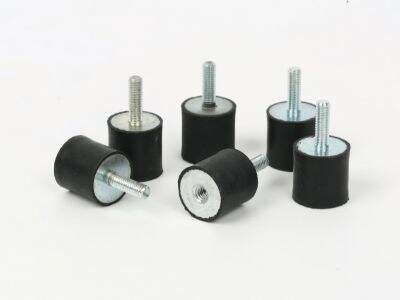They are essential components of any machine. They prevent shock and vibrations while the machine operates. This is similar to how a sponge absorbs water. Different materials are used to make buffers, but rubber and metal are the most common that you will come across. This text is going to compare rubber buffers and metal buffers, so you can make the right choice.
This is an important part of how buffers protect machines from damage. Machines are known to shake and emit loud noises when they are working. This vibration and jolt can be damaging to the machine's internal components. Without buffers, parts of the machine can start to break down awfully quickly. This implies that the machine must be repaired often and the repairs can be expensive. Such is the importance of having the right buffers in keeping the machines running. Both rubber and metal buffers have its own advantages and disadvantages.
The rubber buffers can absorb shock in addition to providing good vibration isolation. That is to say, they contribute to a quieter, smoother-running machine when it operates. Rubber is a great insulator of sound, making them very useful where noise must be kept to a minimum. Likewise, rubber buffers remain well-dispersed and can move freely. This allows the machine to operate without interruption. The flipside to rubber buffers, however, is that they tend to wear out more quickly than their metal counterparts. In harsh surroundings, rubber buffers can have a shortened lifespan if subjected to numerous forceful impacts.
Metal buffers, on the other hand, are quite powerful and very durable. They can bear heavy loads and impact and can take on difficult jobs in factories or elsewhere in the industry. Metal buffers can also withstand extreme temperatures and chemicals, which contributes to their durability across various working environments. Metal buffers do not absorb vibrations and noises as well as rubber buffers. They also tend to be pricier upfront, but the longer life span and better protection they offer the machine can save money over time.
Selecting the right buffer for your machine requires considering a few key factors. Think about how much vibration and shock your machine is experiencing while it is working. Also, consider the environment in which the machine works. Is it very noisy? Does the noise level need to be kept in check? If noise reduction is high on your list, then you possibly want rubber buffers. For something more robust that can also work extremely dirty conditions, metal buffers may be the better choice.
When it comes to the performance and longevity of rubber and metal buffers, the choice comes down to your specific requirements. If the goal is noise reduction and increased versatility of the machine operation, rubber buffers might provide most benefits. But if you need something tough that will withstand the stresses and keep your machine operational in the long-term rather than just for short, then metal buffers will be your go-to.
473 metal 475 Those which are rubber buffers have their own merits and demerits, whereas 474 those which are metal buffers have different merits and demerits. While some systems love this, others fall short and suffer from electrical noise and unwanted behavior, making the filtering light much less effective. We are providing high-class industrial machinery buffers at KFT. Choose from rubber or metal buffers and rest assured that our products will keep your gear and equipment cushioned and operating smooth. The amount of time you take choosing the correct buffer means your machines will run better for longer and need less repair.

